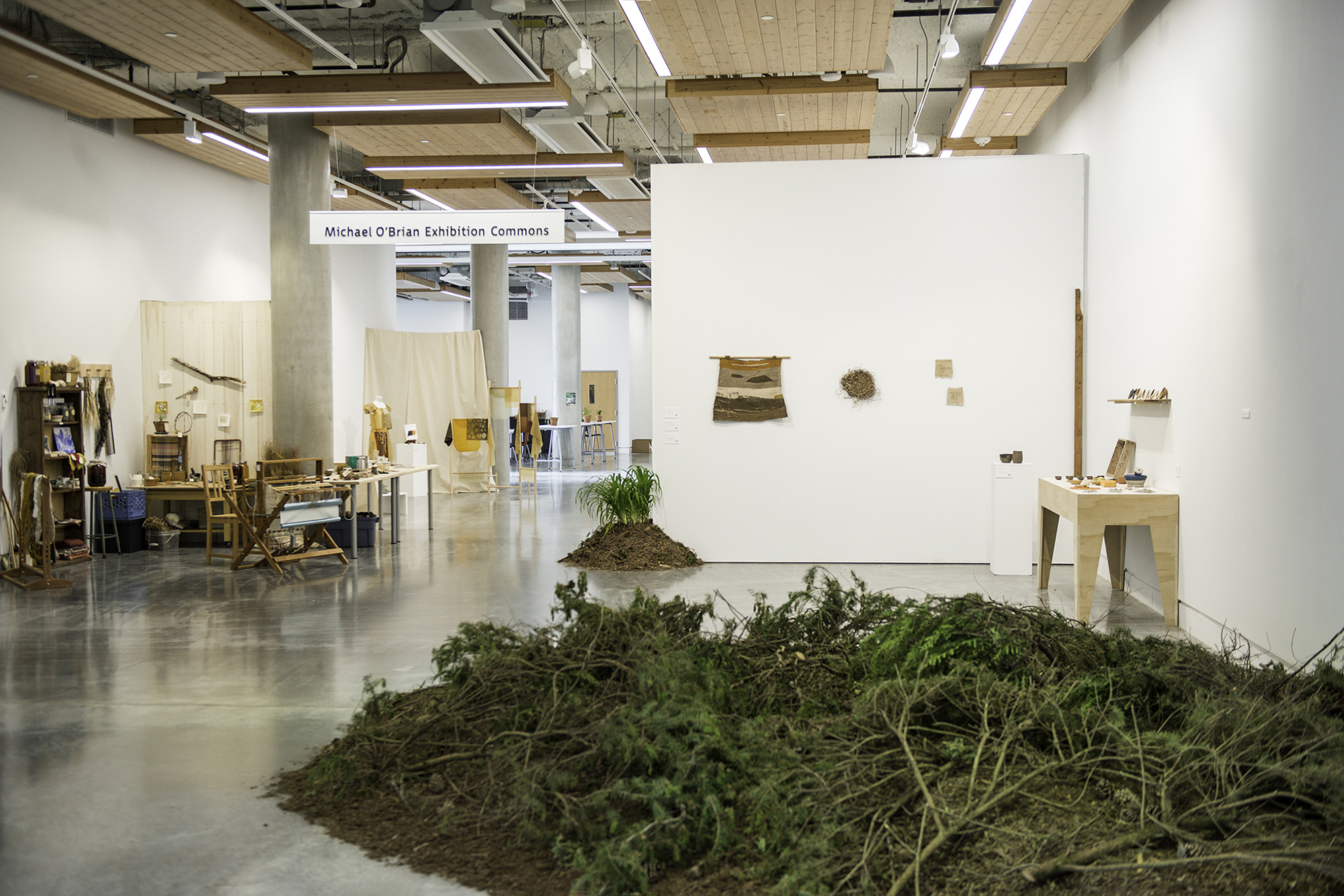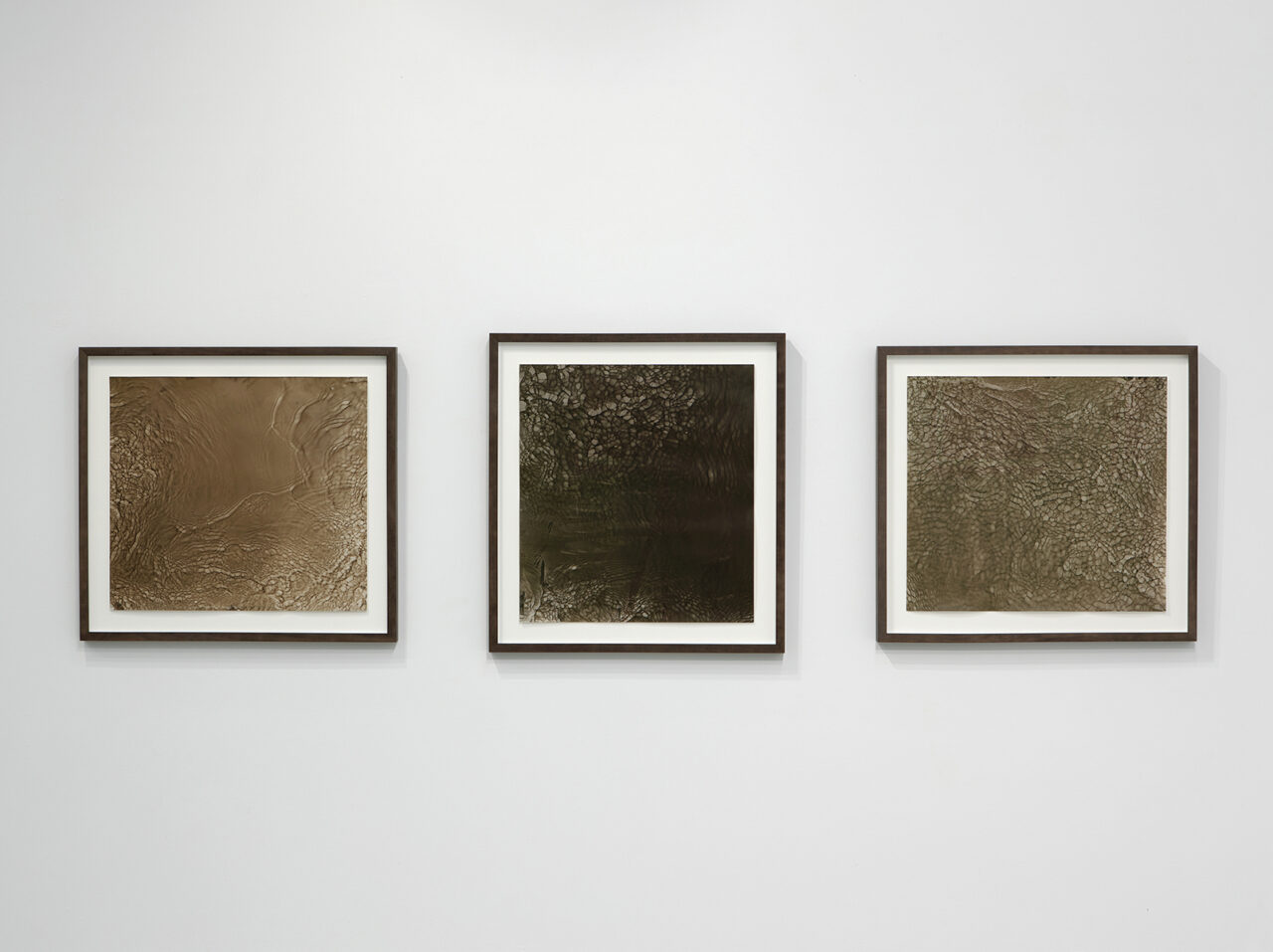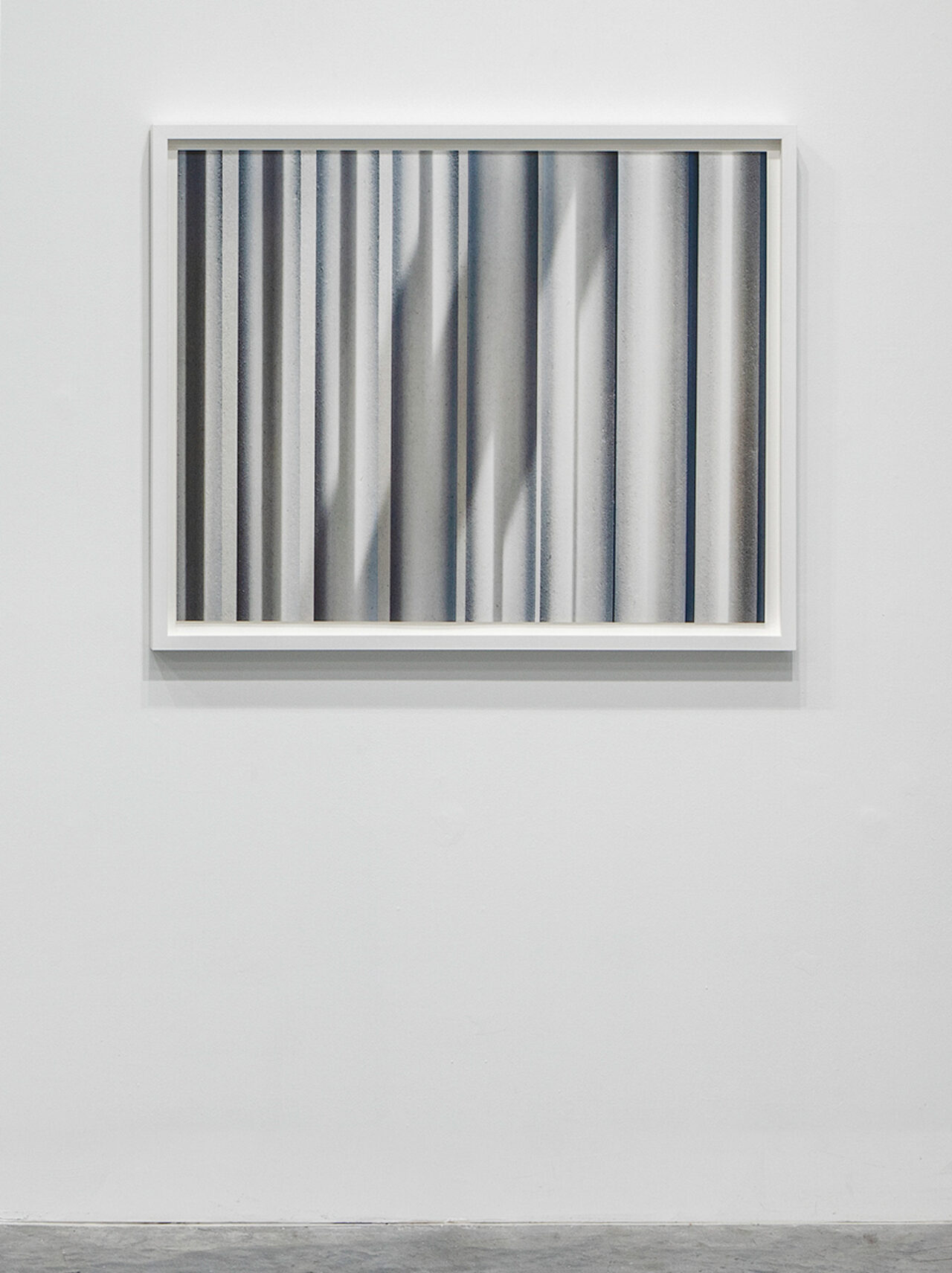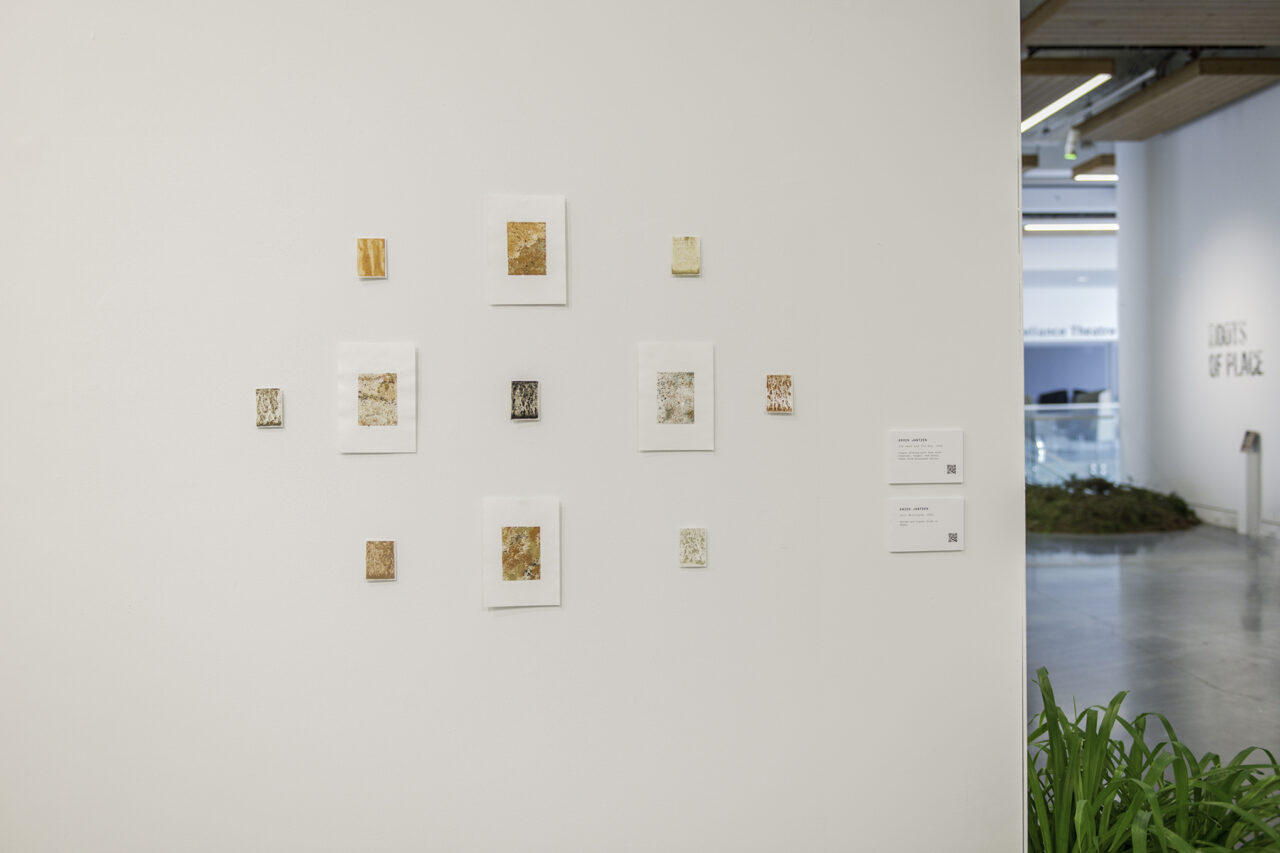Student Shows Reveal Visions of New Worlds Defined by Sensitivity to Place

Roots of Place (installation view) at the Michael O'Brien Exhibition Commons at Emily Carr University. (Photo by Teigan Kelly | Courtesy Teigan Kelly / Erick Jantzen)
Posted on
Two recent exhibitions presented works that share a “quality of attunement that is being encouraged and fostered” in programs at Â鶹ĘÓƵ.
A pair of recent student exhibitions at Emily Carr University are animated by a shared sensitivity to material and place, despite being produced independently of one another.
Titled Roots of Place and repetition + difference, the two group shows exhibited simultaneously at the Michael O’Brian Exhibition Commons in early summer, prompting artist and Â鶹ĘÓƵ faculty member Mimi Gellman to remark on their parallels.
These parallels, she tells me, include themes of “responsibility and reciprocity” to Indigenous communities and to “other-than-human relations” which inform a growing number of creative practices at this moment in history. They also reflect undercurrents informing much of the teaching and learning at Â鶹ĘÓƵ.
“There is a quality of attunement that is being encouraged and fostered within our programs and faculties that is beautifully exemplified in these two exhibitions,” Mimi says. “These exhibitions express the ethos of Emily Carr University as they speak to an integral, informed, innovative and sustainable expression of material exploration. I am buoyed by the work of these artist/designers who have configured their practices to align with principles that are as stimulating and promising as they are aesthetically sublime.”
This observation is underscored by the exhibition texts that accompany both shows.
“As artists and designers devoted to sustainable materials research, we are rooted in our living world,” artist and exhibition curator (BFA 2022) writes in the introduction to Roots of Place. “By handcrafting paper, inks, dyes, textiles, biomaterials and ceramics sustainably from natural sources, we hope to add to a conversation of material ethics, bringing scrutiny to the ecological moment we are living in.”

Sidney Gordon, Dog Rose, Autumn Leaves and Red Flowering Current #2, #3, #1 from X̱á7elcha (Lynn Creek) Watergrams, 2022. Silver gelatin prints. (Photo courtesy Sidney Gordon)
The repetition + difference exhibition text likewise spotlights how artists and co-curators (BMA 2022) and (BFA 2024) create their work in dialogue with their surroundings.
“[Sidney and David’s] methods of image-making are bound by a continued receptivity to the elements; a connectivity to body and place,” reads the text. “The resulting pictures are inscribed with the possibility for something new in our space and time.”
For Sidney, these concerns align with broader conversations happening among many contemporary artists.
“The themes both of our shows are addressing are really taking over in the arts right now, and I believe it’s a conversation that is just going to keep growing,” Sidney, whose recent “” are created by submerging photographic paper beneath the moving water of X̱á7elcha (Lynn Creek), tells me via email.
“As artists we have the power to bring forward specific conversations, but it’s without a doubt that the materials and processes we use to do so can be environmentally detrimental. With parallels of ecological co-creation, the two exhibitions call upon similar responses: a questioning of everyday societal habits and material usage by rethinking the modern/colonial division between human and land.”

David Macgillivray, Rotating Composition #4, 2022. Pigment inks on archival paper. (Photo courtesy David Macgillivray)
David’s work typically involves months-long photographic studies of interior spaces under varying daylight conditions, oftentimes using translucent materials which are themselves transformed by wind and light.
“Much of the work from these exhibitions has been influenced by and is partly authored by light and our environments,” he tells me. The resulting images are “instilled with the moment and the site on which they’re created,” he adds.
“Our practices are rooted in age-old technologies. To me, it’s about paying attention to my surroundings and thinking about them through making images. Here, photography is a tool for looking at how things change over time, and that includes our own subjectivities.”
Erick’s multidisciplinary practice includes hand-making sustainable paper and inks for printmaking. In 2021, he won an Audain Travel Award in part for his found-material sculptures depicting speculative futures where humanity lives in harmony with the environment.

Prints on handmade paper and printed with handmade inks, all created by artist Erick Jantzen from sustainable materials. From the Roots of Place exhibition at Â鶹ĘÓƵ. (Photo by Teigan Kelly | Courtesy Teigan Kelly / Erick Jantzen)
Erick says a responsiveness to place and a sensitivity to material show that his fellow artists and designers refuse to be consigned to the inevitability of ecological destruction. Instead, they reveal a belief in the power of agency even against overwhelming odds.
“They have broken out of the paralysis of convention and are existing in a moment outside of the future we feel doomed to,” he tells me via email.
“I would love if some of the absurdity, beauty and novelty of our work infects those who encounter it. I would hope that others felt emboldened to try out ways of being that venture off the beaten path. We know where the holding pattern takes us; I would love if we all collectively got a little more imaginative and embraced the awkwardness of trying out alternative futures.”
Visit , and online to learn more about their respective practices.
Click on the buttons below to download PDF versions of the exhibition catalogues for repetition + difference and Roots of Place.
Visit Â鶹ĘÓƵ online to find out more about studying in the Bachelor of Fine Arts program and Bachelor of Media Arts program.